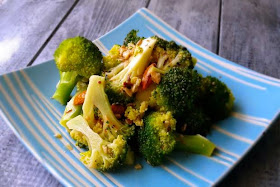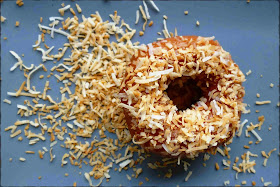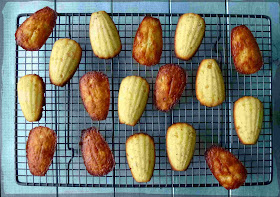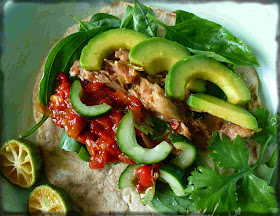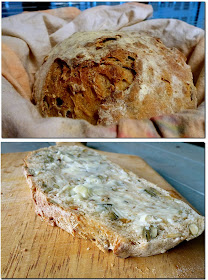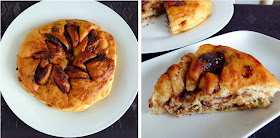Spiced Macaroni Soup
Serves 3
3/4 cup elbow macaroni
1/2 cup broccoli, cut into small florets (optional)
1/4 cup finely diced celery
1/4 cup finely diced carrot
1/4 cup finely diced onion
1 large garlic clove, minced
1cm fresh ginger, peeled and bruised
1 stalk lemon grass (white part only), bruised
1 cinnamon stick
1 star anise
1-2 bird's eye chillies (cili padi)
750ml water
salt or soya sauce, to taste
Spice powder*
1/2 tsp white peppercorns
1/4 tsp fennel seeds
1/4 tsp cumin seeds
1/4 tsp coriander seeds
2 whole cloves
To garnish
fried shallots (store-bought)
torn coriander leaves
Cooked the macaroni in boiling salted water until firm to the bite (al dente). Rinse in cold water, drain and set aside.
Pound or grind all the ingredients for the spice powder with a little salt into a powder.
* If you do not want to grind the whole spices, get each one in powdered form and mix them together.
Heat a tablespoon of oil in a medium pot. Add diced celery, carrot and onion and fry over medium heat until the onion turns translucent (do not let the vegetables brown), 8-10 minutes. Add the garlic, ginger, lemon grass, cinnamon stick, star anise, bird's eye chilli and half the spice powder. Cook for 1 minute, then add the water, cover and bring to the boil.
Taste and add salt or soya sauce and more of the spice powder, if desired. When you're happy with the seasoning, add broccoli florets and cook for 30 seconds. Turn off heat.
Divide the cooked macaroni between three bowls and pour in the soup. Garnish with fried onion and coriander leaves.

